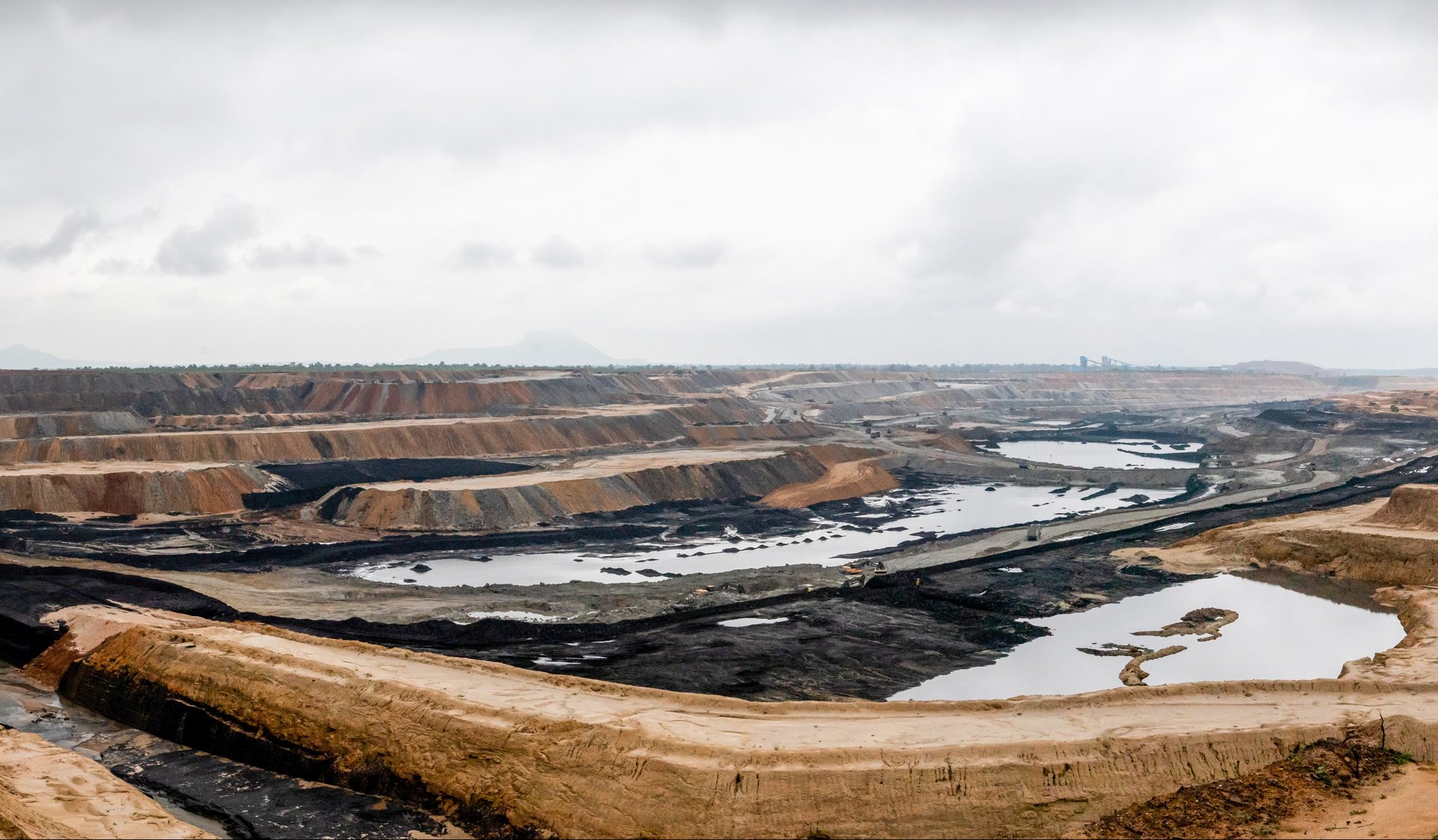Coal mining in Indian forests is turning local villagers into environmental watchdogs
Every day, Ram Lal Kariyam checks the river stream that flows through Salhi, his village in the Hasdeo Arand forest of Chhattisgarh. He is on the lookout for any brown slurry from the coal-washing facility of the sprawling mine nearby.


Every day, Ram Lal Kariyam checks the river stream that flows through Salhi, his village in the Hasdeo Arand forest of Chhattisgarh. He is on the lookout for any brown slurry from the coal-washing facility of the sprawling mine nearby.
“Earlier they would discharge dirty water four times a week,” said the 28-year-old farmer, a member of India’s Gond tribe. “Now it’s rare.” Driving this improvement are forest dwellers like him, who consistently monitor the coal mine for environmental violations.
The central state of Chhattisgarh produced the highest quantity of coal in India in the last financial year. Most of its mines are open-cast—the ground on top has to be destroyed as the coal beneath is too shallow for underground mining. It leads to greater air pollution due to the blasting of land as well as loading and unloading of overburdened soil.
The mine adjoining Kariyam’s village, named “Parsa East and Kanta Basan,” is also open-cast. As the ground is dug up for the expanding project, forested areas are being threatened—along with the homes they provided to tribal villagers.
Filling the gap
India’s pollution control laws as well as approvals for coal mines mandate environmental preservation measures. But enforcement depends on self-monitoring by the miners and by state-level pollution control officers—both of which are required to file six-monthly compliance reports.
In the case of the Parsa East and Kanta Basan mine, that owner is Rajasthan Rajya Vidyut Utpadan Nigam (RRVUNL), a state-owned power generator and distribution utility. Under a nationalization law enacted in 1973, the Indian government owns the rights to all coal reserves in the country, and prime minister Narendra Modi’s government has allocated 84 blocks to state-owned firms at cheap rates.
RRVUNL, though, has outsourced all operations of Parsa East and Kanta Basan to the Adani group, whose controversial environmental track record includes various investigations and local protests over alleged violations at its power plant and sea port projects.
Skeptical, villagers who live around the Parsa East and Kanta Basan mine—and are directly impacted by any pollution from it—have begun actively monitoring the project. They were trained by members of Chhattisgarh Bachao Andolan, a group that opposes coal mining in the Hasdeo Arand forest. The environmental rules governing the mine’s operations are public, but they only existed in English. So the group translated them into Hindi, and taught the villagers how to monitor for violations and who reach out to if they discovered any.
For instance, the mine’s coal washing facility is supposed to be a “zero discharge unit.” The water used to clean the mined coal contains mud and other impurities, as well as small coal particles. It must not be released into the river stream, where the villagers bathe and their cattle drink water.
Now, if Kariyam spots dirty water entering the stream, he records a video and sends it on WhatsApp to SK Verma, the regional officer of the Chhattisgarh Environment Conservation Board.
Limited success
The community monitoring has proved to be a reasonably effective enforcement tool. Discharge from the washing facility into the river stream has been minimized, Kariyam says, though not fully eliminated. According to him, slurry is sometimes discharged under the cover of night.
But punitive action is rare; Chhattisgarh Bachao Andolan has alleged corruption inside the government. “I try to go when I receive complaints from villagers. There is no violation at the mine,” Verma said. He told Quartz that black-colored water results from “coal transportation” nearby, not the coal washing facility, though regulations require coal to be transported using the rail line that extends up to the mine, and not on trucks.
The villagers lack the tools and training for more rigorous monitoring of air, water, and soil pollution, and they don’t have the powers of a government monitor. “We can’t enter the mine area,” Kariyam says, “so we can’t monitor coal dump fires”—spontaneous blazes, sparked when mounds of coal are left to accumulate heat, that emit pollutants such as sulfur dioxide and nitrogen oxides.
And though the villagers may have saved it from regular pollution, “the Salhi river stream now almost dries up every summer because its catchment area has been occupied by the mine,” says Alok Shukla, co-organizer of Chhattisgarh Bachao Andolan.
The stream faces an even more existential threat: Parsa, a new mine proposed near Parsa East and Kanta Basan. In the final stages of approval by the national government, Parsa is also owned by RRVUNL, and has already been contracted to Adani.
When asked for comment, a spokesperson for Adani said questions should be directed to RRVUNL, the mine’s owner. RRVUNL did not respond to requests for comment.
Mining at Parsa will require the displacement of Kariyam and other residents of Salhi. Adani would give them resettlement options under state laws. But that solution is unacceptable to Kariyam: “We will not move from our land. If they manage to get the final clearance, we will die before we are displaced.”